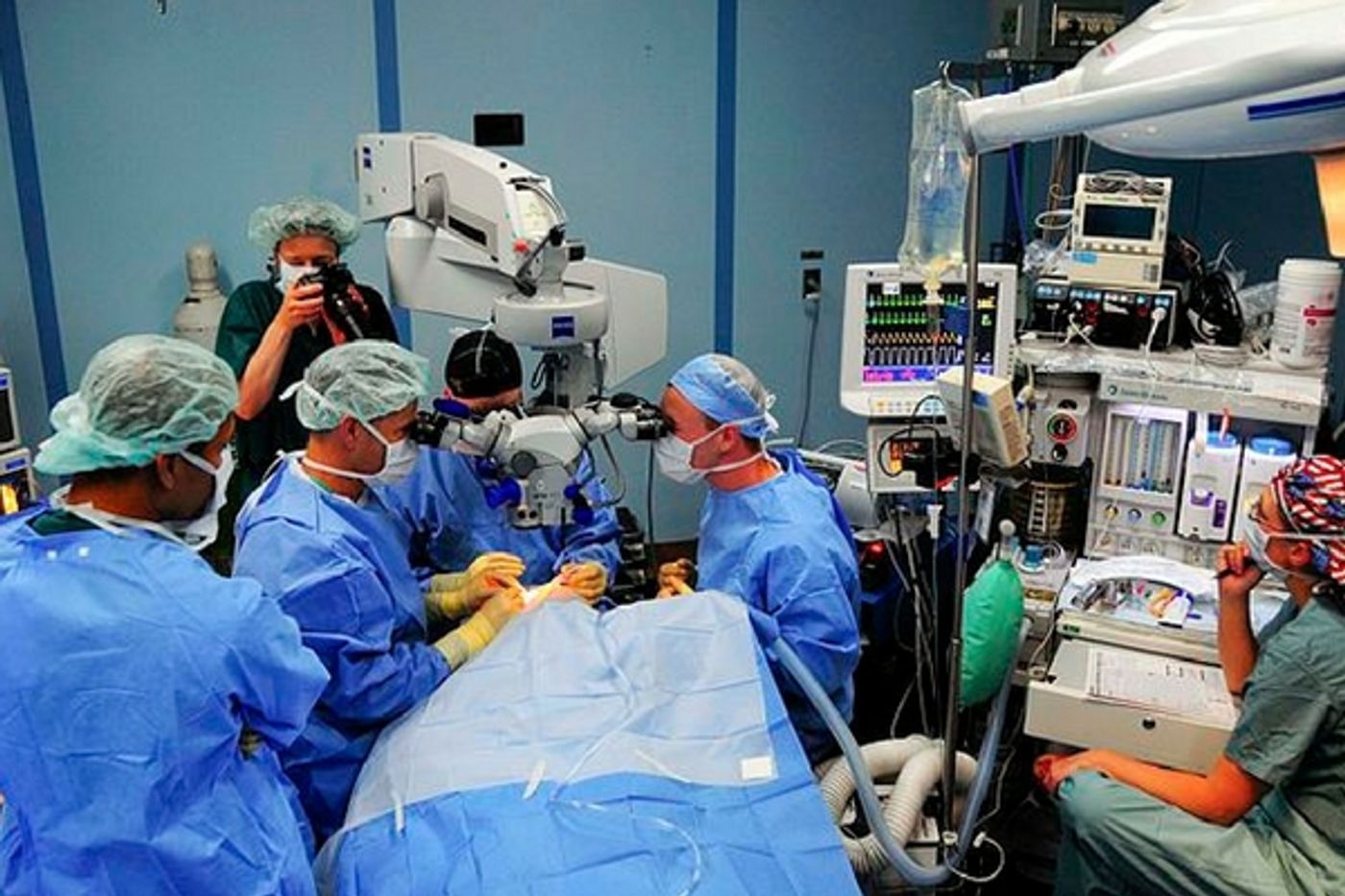Cross your heart, hope to die, stick a needle in your eye. Wasn’t this one of the scariest rhymes ever? As it turns out, there is new technology on what gets stuck in your eye, but it’s good news! Surgeons in the UK have successfully completed an experimental eye surgery that takes place in the eye, under the skull, through an almost microscopic opening. Robert MacLaren, Professor of Ophthalmology assisted by Dr Thomas Edwards, Nuffield Medical Fellow, used a remote control robotic surgical machine to remove a membrain from the retina of a patient in an unprecedented surgical technique. The fact that the technology exists to operate at the back of the eye, well within the cranium, is groundbreaking.

Revd. Dr. William Beaver, 70, an Associate Priest at St. Mary the Virgin, Iffley, Oxford was the first patient to benefit from this literally cutting edge surgical procedure. He had a membrane removed from his retina that was interfering with his vision. This layer of tissue over the retina was barely a 100th of a millimeter thick. Making it even more unforgettable was the fact that the device has a pretty recognizable name.
The Robotic Retinal Dissection Device (R2D2) was used for the first time on the Rev. Beaver. The project to investigate this technique was sponsored by the University of Oxford and funded by the NIHR Oxford Biomedical Research Center and the NHS Foundation Trust that oversees Oxford University Hospital. The charity Zizos, out of Holland also contributed. Their mission is researching treatments for choroideremia, a genetic form of blindness
In order to do the procedure, this high tech robot has to enter the eye and go through to the cranium by way of a single hole that isn’t quite 1mm in diameter. All of the parts of the procedure have to be done through this one access point, even though the patient’s eye is rotated for different access during the operation.
Because the surgery is so delicate, the device is robotically controlled so that even the smallest tremor of the surgeon’s hand does not disrupt the process. Something as simple as the radial pulse of the doctor can affect the movements, so it’s controlled via a joystick and highly sensitive touch screen to guide the ultra-thin needle through the eye and into the space adjacent to the brain. While there are plenty of other robotic surgical devices for other procedures like cardiac caths and hysterectomies, those robots are very large. R2D2 was engineered to be much smaller.
Dr. Maclaren told the BBC, “Operating at the back of the eye needs great precision, and the challenge has been to get a robot system to do that through a tiny hole in the wall of the eye without causing damage as it moves around. Most robots in theatre are big, with big engineering whereas this is tiny — everything had to be shrunk down. There is no doubt in my mind that we have just witnessed a vision of eye surgery in the future”
In Father Beaver's case there was a thin membrane on the surface of the retina. As it grew, it pulled the sides of the retinal tissue inward forming an uneven shape that didn’t allow him to see properly. The membrane was so thin that even the slightest miscalculation with surgical implants could have resulted in devastating damage to the retina.
R2D2 was developed by Preceyes BV, a Dutch medical robotics firm established by the University of Eindhoven. Over the last 18 months, the Preceyes engineers and the team at the University of Oxford’s Nuffield Laboratory of Ophthalmology have had their heads together over how to best use this technology. After the surgery, when he was being examined at a follow visit at the Oxford Eye Hospital, the brave Father Beaver said, “My sight is coming back. I am delighted that my surgery went so well and I feel honored to be part of this pioneering research project.” There will be 12 more patients in the trial who all have different ocular conditions.
Check out the exclusive video below, courtesy of the BBC, to see how this new procedure could revolutionize robotic surgery.
Sources:
BBC,
Daily Mail,
ABC.net









